Backpacking is a great way to travel and explore Romania for a first-time visitor. In Southeastern Europe, Romania has a fascinating history and a unique culture that goes far beyond fictional 19th-century tales of horror.

The Real Romania is a beautiful country where Eastern Europe meets Southern, with one hand holding onto tradition and the other reaching toward the future.
Backpacking in Romania is an excellent way to experience this country. The landscapes, the contrasts of old and new, excellent food, affordability and even the challenges of travel are merely an introduction to why Romania is an excellent backpacking destination.
Why Romania?
From Ancient Greece and Rome to the Ottoman Empire, an independent kingdom to the shroud of Communism and, ultimately, democratic revolution – and that’s the brief version – the history of modern-day Romania is long and complex.
But what specifically makes Romania such a great place to travel? Why is it an ideal destination for backpackers?
History & Geography
Each of the aforementioned historical eras left an impression on Romania, and the country is a fascinating study of interweaving cultures and civilizations.
Romania is home to beautiful castles, ancient fortresses, stunning churches and well-preserved medieval cities. The study of local history is further evident in more recent history that often sits adjacent to the old.

Recent history in Romania is not as pretty. Seriously, Communist architecture is generally on the unsightly side. I find it totally fascinating, but it does tend to fall into the eyesore category.
The days of Communism left a stain, yes, but this is an important part of understanding the country and the people today.
The geography is another great reason to go backpacking in Romania. It varies nicely from plains to mountains to seaside. Backpackers traveling in Romania can ski in the Winter, sit on a Black Sea beach in the Summer and hike the Danube River Delta or Carpathian Mountains most of the year.
That’s without even considering the history and picturesque settings of many Romanian cities, towns and villages.
Romanian Food
Romanian food is a reflection of its history. It is a blend of cuisine from the Balkans, Turks, Slavs and Southern Europe. This comes together to make a cuisine that is uniquely Romanian.

Most importantly, of course, my fellow hungry travelers can rest easy knowing that the food is good. It’s cheap (very cheap by Western European standards), fresh and locally-sourced. More info on the food in the Hangry Backpackers Guide to Eating in Romania!
Romania is Cheap to Travel
In comparison to Europe and the United States, Romania is definitely a budget travel destination.
Food is fairly cheap. Hotels are not expensive. Paid attractions are usually well worth the low price of admission. Transportation is extremely affordable. We dig further into the travel costs of backpacking and travel in Romania below.
Overall, your money goes further in Romania. There are few ways that can “break the bank” for most Western tourists.
Fewer Tourists
Fewer tourists choose to visit Romania than other places in Europe.
Prior to the 2020 travel shutdown, Romania was already one of the lesser-visited places in Europe. With travel returning, foreign tourist arrivals remain lower than other countries on the continent.
You won’t have to deal with crowds of other tourists who clog the sites and streets of more conventional travel destinations in Europe.
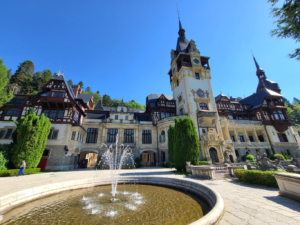
Why not travel somewhere outside the norm? Feel like you’re in a different country. Experience another country rather than go on a holiday with everyone else. Romania is a fascinating place, and you won’t have to compete with hordes of tourists.
How Long Should You Travel in Romania?
How much time you spend in Romania depends on your interests. This doesn’t vary much from any travel destination in the world.
Do you want to explore the “whole” country? A sample? Perhaps a brief, busy trip?
If you want to lounge at the beach all day, that’s totally fine. Maybe Greece or Croatia is the place to go for you. There are beaches in Romania that are surely a blast, but the Black Sea is not the Greek Isles or Dalmatian Coast.
Romania can be a destination for trips of varying length. Most of the other foreign travelers with whom I spoke in Romania were spending at least a couple of weeks in the country. Transportation is slow – more on transportation below in our in-depth Romania transportation guide – so you cannot see large swaths of the country in a few days.

If you want to experience local culture, feel like you’re getting off the typical tourist trail and go somewhere different, Romania is a good option. Here are three suggestions for length of stay for traveling conventionally or backpacking in Romania:
One Week or Less
Honestly, I don’t recommend traveling to Romania for a week or less on a first-time visit. Excluding microstates, a single week isn’t enough time to explore any country in the world. Romania, particularly Bucharest, attracts a fair amount of short-term visitors to party and gamble. Flights are short and extremely cheap from Europe and the Middle East

However, for a small sample of the country, you can visit Bucharest and make a couple of stops in Transylvania in a week or less. This is enough time to see the city, sample a few local dishes, visit a castle or two and catch a glimpse of the scenery.
Two Weeks
In two weeks, you can see much more of Romania. This is enough time to thoroughly explore Bucharest, see more of Transylvania and add another area to your travels. For instance, you can add a hike, visit the Black Sea beaches or detour to Romanian Banat (the west).
The two-week time frame puts travelers in a gray area. As mentioned, transportation in Romania can be slow. To thoroughly see your destinations, you cannot do much more than mentioned in the previous paragraph.
If you wish to blaze through, quickly see as much as possible and move on to the next place, you can tick off a lot more boxes. I caution against going too fast, though. Traveling too fast is tiring and eventually causes travel burnout. Slower travel is more rewarding, and you will be able to see more than the crowded popular tourist sites.
A Month or More
If time permits, you can have a great experience backpacking in Romania for a month or more. For a first-time visitor, you can see a lot of the country and even dig deeper in areas you particularly enjoy.
Several of Romania’s most striking attractions are not easy to reach for the average traveler. For instance, the Churches of Moldavia in the far northern part of the country (see the stunning Sucevița Monastery below, photo from Rachel Heller at Rachel’s Ruminations), and small villages of the Carpathian Mountains take longer to reach via train, bus or automobile, IF there is even any public transit option to reach your desired destination.
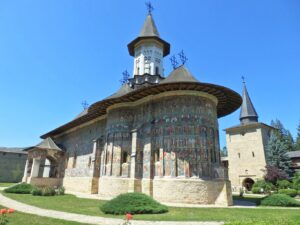
With limitations of transportation and tourist infrastructure, you need time to visit more remote or less-connected places without running yourself ragged.
The advantage of taking the extra time is what you encounter along the way. In Romania, life can be starkly different outside of tourist bubbles. It’s also significantly cheaper.
By traveling slower and longer, you can see the traditional side of Romania, which is still remarkably visible in the 21st century. And your trip won’t necessarily be more expensive as you spend time in cheaper places.
Traveling longer or backpacking in Romania leads to experiencing a more local side of culture. Once you leave the popular travel trail, it feels like you have the place to yourself.
The Best Time of Year to Visit Romania
The climate in Romania is exceptionally seasonal. Winter is cold, and the Carpathian Mountains are a nice place for snow sports. Summers are warm and particularly hot and humid in Bucharest. Spring ranges from cold to hot, and Autumn is the opposite.
All of Romania can and typically does receive snowfall at some point during Winter. Even along the Black Sea, snowfall is a normal occurrence.
Summer is slightly cooler in the mountains. However, it gets hot across the country, and Bucharest temperatures hit triple digits Farenheit (above 37C). There is also slightly more rain throughout the country during Summer months.
Summer is the busier tourist season with peak time being July/August. Much of this traffic is domestic tourism and is especially notable along the Black Sea and in the Mountains.
Due to the milder-but-not-cold weather, the best time to travel in Romania is Spring or Autumn. Specifically mid-to-late Spring and early-to-mid Autumn.

Springtime brings flowers like I’ve seen in few other places in the world, and Autumn sees the country shift to spectacular shades of Fall. Snow is not an obstacle, and you can typically get by with a light jacket for cool evenings. Fewer foreign and domestic tourists is another good reason to visit during these times.
**Another note for backpacking in Romania is the beginning of Summer marks an interesting scene in hostels. Something I have never seen anywhere else, several hostels in Romania were full of children.
These ranged from elementary school-aged kids to high school kids. I’m not exactly sure if these were school trips or Summer camps, but it was less than ideal for a thirty-something backpacker to be in a hostel that was also hosting 50 teenagers. Some hostels were even completely booked due to these groups.
Backpacking Romania Travel Budget
The affordable nature of backpacking and travel in Romania has already been mentioned a few times. Your travel budget will take you further in this country.
To be honest, Romania isn’t as cheap as I anticipated. That’s not to say it’s expensive. It’s not. Essentially, I was expecting to find a place with dollar beers on every corner. It is actually closer to $2 for half-liter of domestic brew.
So what does “cheap” mean in Romania? What kind of budget do you need?
Cost Comparisons of Travel in Romania
In comparison to Northern Europe, Romania is dirt cheap. Next to Iberian countries, food is a little cheaper, but accommodation and transportation is significantly cheaper. Compared to most of the USA, it’s an affordable destination.
Romania is in the European Union but does not use the EURO. The local currency is the Romanian Leu (RON), plural Lei, which breaks down into 100 Bani.

As of late-July 2022:
- $1 USD is worth 4.84 RON
- 1 EURO is about 4.94 RON
This conversion has been closer to 4 RON and 4.50 RON, respectively, over the last few years. What this means for American and EU travelers is that the current exchange rates make Romania an even more affordable destination than in recent years.
Compared to most of Europe, Romania is a cheap place to travel. Average incomes are among the lowest in the European Union, and cost of living is in line with income. You can easily find a reasonably nice meal for less than $10 USD (50 RON) in most tourist areas.

That’s cheap! Consider that costs are always inflated in high-traffic tourist areas and City Centers. To find a decent meal for that price in a popular location is indicative of overall affordability in a destination.
With fewer tourists from wealthy countries, many Romanian businesses also depend on local customers. This keeps prices lower in tourist areas than those in a typical European tourist area catering to wealthy foreigners.
Daily Budget
You can travel in Romania with ease for $50/day. With this budget, you can stay in a hostel or a decent hotel, eat out for all meals, cover transportation and enter paid attractions. You won’t really have to pay much attention to spending habits.
Backpacking in Romania can be even cheaper. If you eat outside of tourist areas, avoid nightclubs, limit paid attractions and stay in hostels, you can easily trim that budget by $10-20/day.
Bucharest is generally the most expensive city in Romania. Other tourist cities, such as Brasov, are more expensive than smaller towns and rural areas, but it is easy to save money outside of the tourist center.
Examples of Prices in Romania
Here are a few examples of prices I paid in Romania (2022, in USD):
- Hostel in Bucharest: $10-14/night
- Rush Hour Uber (over an hour) from OTP Airport to Bucharest Center: $15
- Bus, 5-hour Trip: $17 (84 RON)**
- Organ Concert in Historic Church (Brasov): $4 (20 RON)
- Large Iced Latte: $2-3 (10-15 RON)
- Meal, Outside Tourist Center: $4-5 (18-25 RON)
**buses are much more expensive than trains
These exchange rates are approximations. Inflation has hit Eastern Europe harder than Western Europe or the USA. The Romanian Leu has been weakening in 2021-22.
The Hangry Backpacker’s Guide to Bucharest on a Budget is coming soon!
Thinking About Trying Out a Hostel?
Check out the Hangry Backpacker’s Hostel Series!
Is it Safe to Travel in Romania?
There are a lot of stereotypes about travel safety in Romania. Most of them are untrue. To be fair, I am a male sizing in about 6’4” and 240 pounds, but I never once felt unsafe. Not one single time. Even walking at night, personally, I did not feel unsafe.

I try to be an observant traveler. When I’m walking around with thousands of dollars worth of electronics, it’s easy to be a little paranoid. I maintain a tight grip and a suspicious eye in these moments.
It might be fair to call that overreacting, especially as I never felt unsafe in Romania. However, that’s the key to safe travel. It’s okay to be comfortable. It’s more important to remain observant, mind your belongings and not be an idiot.
Getting Around
Is it difficult to travel in Romania? Do they speak English? These are common concerns for travelers heading to any country for the first time.
Fortunately, navigating around Romania is easy for most visitors. Although it isn’t the most modern country, the infrastructure is good enough. Getting directions, ordering food, checking into hotels – it’s just like anywhere else.
Backpacking in Romania, if you travel away from typical tourist destinations, may incur a few more challenges. These challenges, though, are generally minimal and not worth much consideration when deciding whether or not to visit the country.
Transportation in Romania
Transportation in Romania is good. It’s not fast. It’s not always efficient. But it is reliable.
Large cities are well-connected with trains. There may be long journeys with multiple transfer stations on longer routes. Trains are also the cheapest way to get around, but they do not serve many smaller towns or villages.
Buses tend to be faster and have slightly better connections to more locations. Travel by bus is also much more expensive in Romania.
The main challenge of transportation is for backpacking in Romania and venturing beyond the more popular tourist locations. Smaller towns and rural areas being less connected leaves travelers scrambling for rideshare services or local vans/buses that are less reliable.
Renting a car is an excellent option to get around the countryside independently. However, drivers in Romania are totally nuts. Exercise caution if you choose to rent a car.
Language Barriers
Aside from rural or more remote areas, you can count on English being spoken. In Bucharest, it feels like the whole city speaks English. Young people, especially, speak English well.
There are minorities of German, Hungarian and Ukrainian speakers in parts of Romania. The primary language in the 21st Century is overwhelmingly Romanian, followed by English, but it is interesting to see occasional signs in other languages that provide insight into local history.

In major tourist cities, travelers really don’t need to worry about a language barrier. Aside from a few basic phrases to say “thank you” or “hello,” there’s no need to start studying the Romanian language.
Romania has a lot to offer travelers. On the surface, it may not have the flashy appeal of sunny Mediterranean destinations or impressively-preserved history of the UK. The value in traveling to Romania is what the country offers beyond the superficial. It is one of the best places in Europe to visit and easily experience the country beyond a tourist bubble.

Backpacking in Romania is fun, too. The challenges backpackers face are not so fierce that frustrations overtake the fun.
Romania is a safe, budget-friendly travel destination with attractions ranging from food and drink to nature and history. This is an ideal place to see a part of Europe that is in the midst of spectacular changes and maintains a hold on its authentic, traditional roots.






























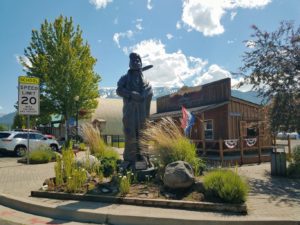










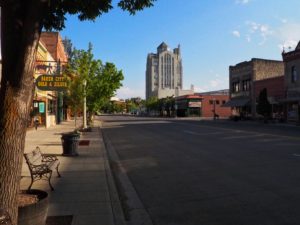
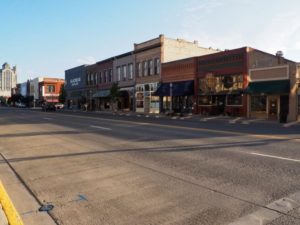
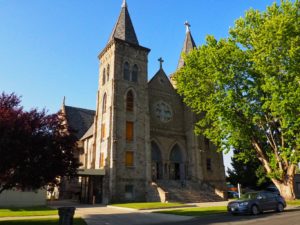
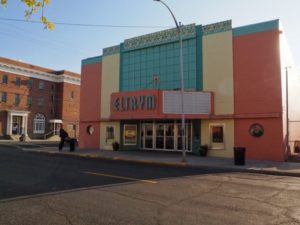
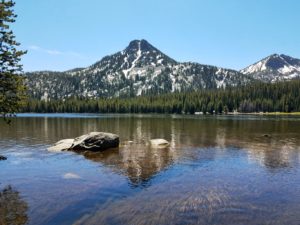




















You must be logged in to post a comment.